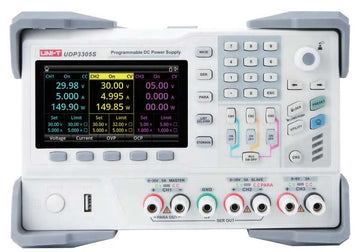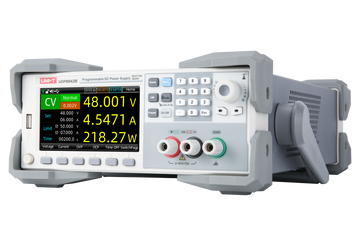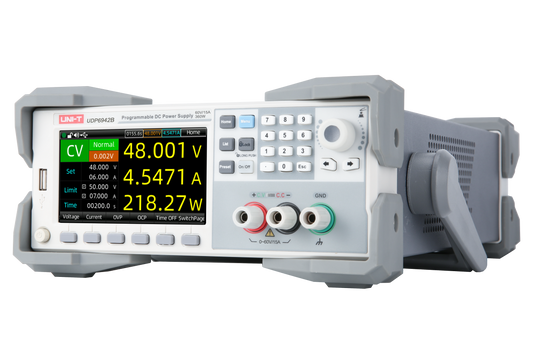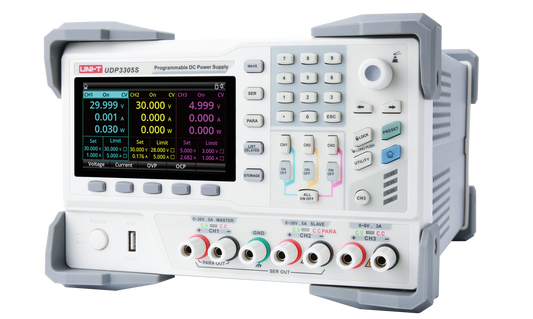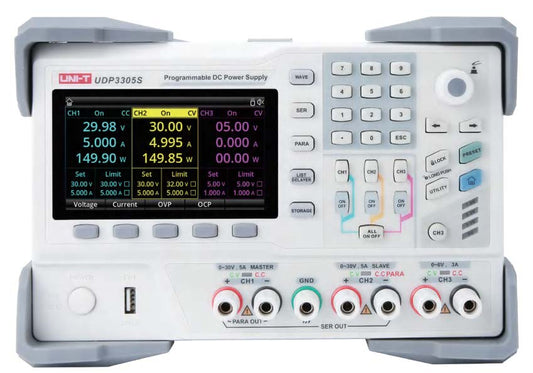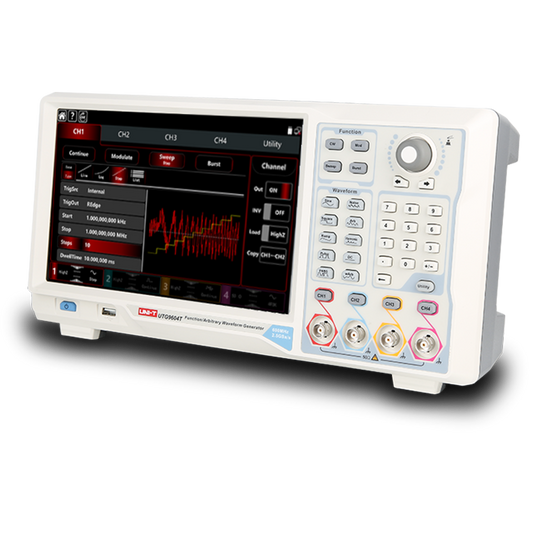Revolutionizing Electric Vehicle Design with the Uni-Trend UDP3305S DC Power Supply
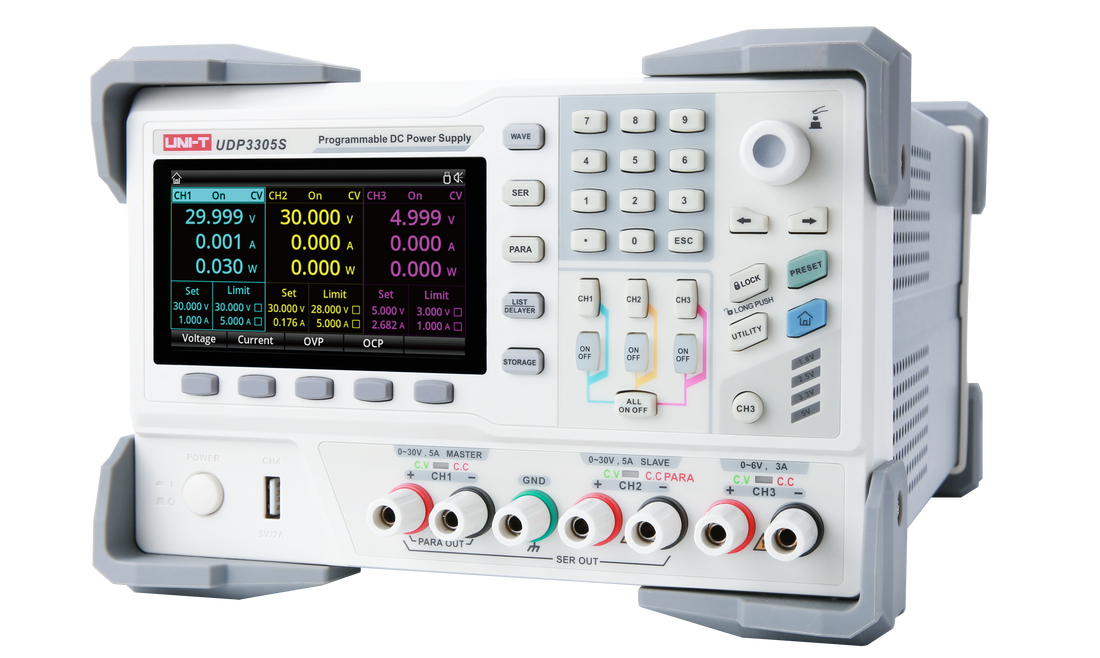
As the electric vehicle (EV) industry continues to evolve, the demand for efficient, reliable, and high-performance power systems is paramount. Central to this development is the role of DC power supplies in the design, testing, and validation of EV components. The Uni-Trend UDP3305S DC power supply emerges as a game-changer, offering a range of features that enhance the efficiency, reliability, and performance of EV systems. This article delves into the benefits of using the UDP3305S in EV design, supported by technical specifications, case studies, and real-world examples.
Key Features and Technical Specifications
The Uni-Trend UDP3305S DC power supply is designed to meet the rigorous demands of modern EV development. Its key features and technical specifications include:
- Dual Outputs with Independent Control: The UDP3305S provides two independent channels, each capable of delivering 0-32V and 0-5A, with a total power output of 320W. This flexibility allows for simultaneous testing of multiple EV components.
- High Resolution and Accuracy: With a resolution of 1mV/1mA, the UDP3305S ensures precise voltage and current control, essential for accurate simulation and testing of EV systems.
- Low Ripple and Noise: The power supply boasts a ripple and noise level of ≤1mVrms/≤3mArms, minimizing interference and ensuring stable power delivery, crucial for sensitive electronic components in EVs.
- Overvoltage, Overcurrent, and Overtemperature Protection: These protective features safeguard both the power supply and the connected devices, enhancing reliability and safety during testing.
- User-Friendly Interface: The large LCD display and intuitive controls make the UDP3305S easy to operate, reducing the learning curve for engineers and technicians.

Enhancing Efficiency in EV Design
The UDP3305S contributes to the efficiency of EV design in several ways:
- Streamlined Testing and Validation: With its dual independent outputs, engineers can test multiple components simultaneously, reducing the time required for validation. This feature is particularly beneficial in the iterative design process of EV powertrains, battery management systems (BMS), and motor controllers.
- Precision in Component Testing: The high resolution and accuracy of the UDP3305S allow for meticulous testing of components under various operating conditions. This precision ensures that each component meets the stringent performance standards required for EV applications.
- Reduced Downtime: The protective features of the UDP3305S prevent damage to both the power supply and the connected components. By minimizing the risk of overvoltage, overcurrent, and overheating, the power supply reduces downtime caused by equipment failures, enhancing overall productivity.
Boosting Reliability in EV Systems
Reliability is a cornerstone of EV design, and the UDP3305S plays a pivotal role in achieving this:
- Consistent Power Delivery: The low ripple and noise levels ensure that the power delivered to EV components is stable and free from interference. This consistency is vital for the reliable operation of sensitive electronic systems, such as BMS and motor controllers.
- Robust Protection Mechanisms: The built-in protection mechanisms of the UDP3305S safeguard against common electrical faults, preventing damage to critical EV components. This reliability in power supply translates to greater confidence in the overall system performance.
- Enhanced Lifecycle Testing: The ability to precisely control and monitor voltage and current enables comprehensive lifecycle testing of EV components. Engineers can simulate real-world operating conditions, identifying potential failure points and improving the reliability of the final product.
Real-World Examples and Case Studies
Case Study 1: Battery Management System Testing
A leading EV manufacturer integrated the UDP3305S into their BMS development process. The dual outputs allowed simultaneous testing of the main battery pack and the auxiliary systems, significantly reducing testing time. The precise control and low noise levels of the UDP3305S ensured accurate measurement of the BMS performance, leading to improved battery efficiency and safety.
Case Study 2: Motor Controller Development
An EV startup utilized the UDP3305S to test and validate their motor controllers. The power supply's high accuracy enabled detailed analysis of the controllers' response to different voltage and current levels. This capability was crucial in optimizing the controllers for maximum efficiency and performance, resulting in a more robust and reliable product.
Conclusion
The Uni-Trend UDP3305S DC power supply stands out as a vital tool in the arsenal of EV designers and engineers. Its combination of dual independent outputs, high resolution and accuracy, low ripple and noise, and robust protective features makes it an ideal choice for enhancing the efficiency, reliability, and performance of EV systems. Through real-world examples and case studies, the benefits of incorporating the UDP3305S into the EV design process are evident, paving the way for more advanced and reliable electric vehicles. As the EV industry continues to grow, the UDP3305S will undoubtedly play a crucial role in driving innovation and excellence in EV design

